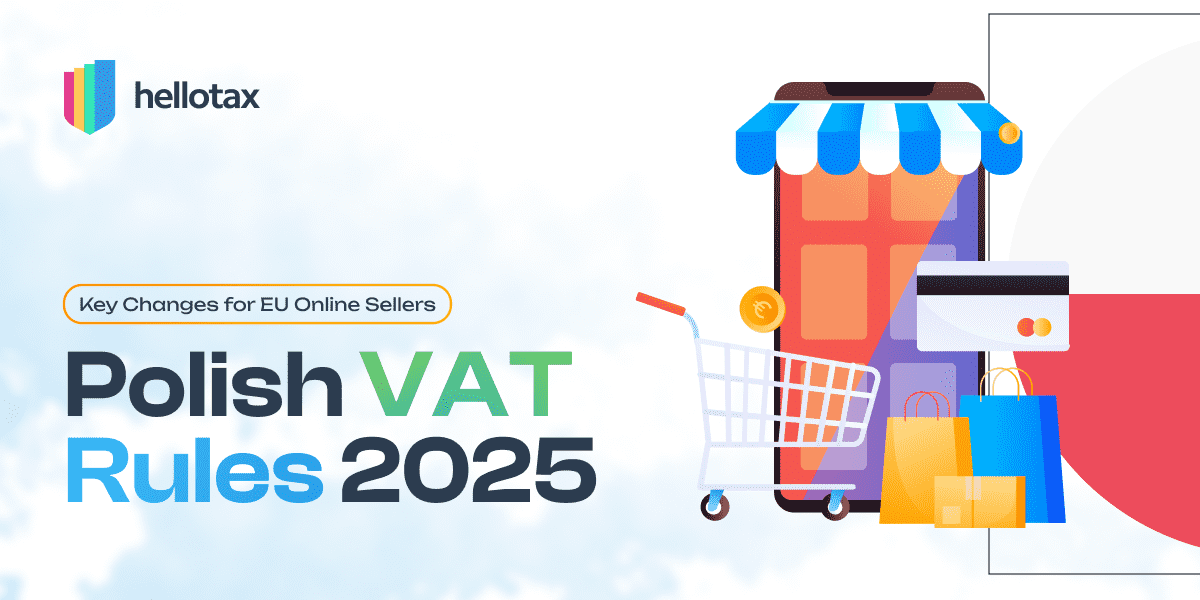Please check our latest article on dropshipping
Maria
Last Updated on 27 November 2023Dropshipping stands as a cornerstone of e-commerce, offering businesses the potential for streamlined logistics and reduced upfront inventory costs. However, the VAT landscape introduces complexities that can quickly turn this dream into a logistical nightmare. While conventional wisdom may suggest leveraging the One-Stop-Shop (OSS) system for VAT reporting in dropshipping, this article takes a different stance. It dives into the intricate realm of dropshipping transactions and reveals why recommending the use of OSS can inadvertently jeopardize the very essence of your dropshipping scheme.
In the upcoming conversation, we’ll explain what happens if you make this choice and how it can cause unexpected problems with taxes and money. Let’s explore the details of dropshipping and find out why using OSS might not be the right move for your business.

Let’s start with the basics: What is dropshipping?
Dropshipping is a business model that allows entrepreneurs to start an online business without making large investments in inventory. With dropshipping, the products are shipped directly from the supplier or wholesaler to the end customer, and the dropshipper only acts as a middleman, marketing and selling the products on their website. This makes it a cost-effective shipping method, as the dropshipper doesn’t need to purchase and store inventory upfront.
Dropshipping is particularly suitable for startups and e-commerce beginners who want to test products on the market before investing heavily in inventory. It is a type of chain transaction subject to VAT, which means that it involves at least three parties: the supplier or wholesaler, the dropshipper, and the end customer. In contrast, traditional retail involves buying, storing, and shipping products directly to the customer and is also subject to VAT.
You can also read more about this topic in our previous blog post about Dropshipping.
How exactly does dropshipping work?
Dropshipping involves three parties, including the end customer, shop owner, and dropshipping Dropshipping involves three parties, including the end customer, shop owner, and dropshipping provider or wholesaler. Unlike traditional mail-order businesses, the shop owner does not physically handle the products. The end customer places an order on the shop owner’s website, assuming the shop owner will handle the shipping. The shop owner then forwards the order details to the dropshipping provider, who packages and ships the product directly to the end customer. The dropshipping provider manages all shipping and customs formalities.
Here are some key points about dropshipping:
- The end customer buys a product from a shop, but the product is shipped by the dropshipping provider.
- The shop owner sells products through marketing and customer service but does not handle the products.
- The dropshipping provider packages and ships the product directly to the end customer.
- End customers do not know that the product was shipped via dropshipping, and the packaging usually does not indicate the wholesaler’s involvement.
- The shop owner’s profit comes from the sale price minus the purchase price and the shipping costs that the wholesaler charges.
It’s important to note that dropshipping is a shipping method, not a business model like drop servicing. Drop servicing involves a seller appearing as a service provider, while the actual services are performed by third parties.
What types of dropshipping are there?
Dropshipping has two main fulfillment variants: fulfillment via a wholesale warehouse and fulfillment via a consignment warehouse.
Fulfillment via Wholesale Warehouse:
Choosing dropshipping fulfillment via a wholesale warehouse gives you access to your supplier’s entire product range. However, you bear both the purchase and shipping costs to the customer. If the supplier doesn’t have certain products in stock, you cannot process your customers’ orders.
Fulfillment via Consignment Warehouse:
With dropshipping fulfillment via consignment stock, a separate storage area is set up for you, the dropshipper, in your provider’s central warehouse. This stock is reserved for you, providing you with a secure supply of goods. However, in addition to purchasing and shipping costs, you will also have to pay additional costs and purchase obligations. This type of dropshipping is particularly worthwhile if you can already estimate the demand for the products relatively well.
Other Dropshipping Fulfillment Models:
Today, many fulfillment models have evolved as the dropshipping process has developed. You can choose from a variety of dropshipping fulfillment programs. Many dropshippers get their products from China and use product agents to search and find products for them on Chinese online trading platforms. Some agents also take care of storage and product shipping, some of which are branded. Other dropshippers order products themselves in larger quantities and store them in a European fulfillment center, such as an Amazon warehouse. With limitless possibilities, you’re sure to find a fulfillment process that perfectly suits your dropshipping business.
How is dropshipping viewed from a sales tax perspective?
Dropshipping is a type of chain transaction that has specific characteristics and is subject to VAT. Here are the key points you need to know about dropshipping from a VAT perspective:
Characteristics of dropshipping or chain transactions:
- Two sales contracts are involved for the same object of purchase: one between the online merchant and the customer, and another between the supplier and the online merchant.
- The product is shipped directly from the supplier to the end customer, bypassing the online merchant.
Although dropshipping has many benefits, EU-based online retailers cannot report all dropshipping cases via the One-Stop-Shop (OSS). In order to avoid any VAT compliance issues, dropshipping transactions must be reported correctly. Dropshipping cases cannot be reported via OSS in all cases, so understanding why is essential.
Dropshipping and OSS?
Dropshipping in conjunction with OSS may not always be feasible.
Let us take a sale from a German Online seller through a German Dropshipping Supplier to a Customer in Poland as an example.
In a dropshipping transaction in which the goods are delivered to an individual residing in another EU country, the sales transaction can not be reported via OSS.
The German Dropshipping supplier is transporting the goods directly to the end customer in Poland.
Therefore, the Dropshipping supplier performs the “moving delivery” to the German online seller leaving only the “non-moving delivery” between the German Online seller and the Polish customer, which is subject to Polish sales tax.
You might recognize this situation because when you sell products to customers in other EU countries, you usually have to deal with their VAT (like Polish VAT in this case), and you can report it through OSS. But why doesn’t this work the same way in dropshipping?
As there is no storage in Germany made by you, but it is the dropshipping supplier who stores and organizes the shipping, OSS cannot be used.
The VAT transactions when the seller is in Germany, the supplier is in Germany, and the customer is in Poland are as follows:
- Seller in Germany to Supplier in Germany: B2B within Germany with 19% sales tax (moving delivery)
- Seller in Germany to Customer Poland: B2C sales subject to Polish sales tax
So an Online seller in Germany has to register for VAT Poland
Why can’t I report B2C sales via the OSS?
Obviously, you’re confused at this point. This is exactly the problem with dropshipping cases: From the outside, it looks like an intra-EU distance sale that you could report via the OSS. However, not everything that looks like an OSS sale necessarily is. This is primarily because the supplier is making the moving shipment because they are transporting the goods, not the online retailer.
The place of delivery for a non-moving supply in a series of transactions is determined by where the delivery item is at the end of the transport/dispatch, which is usually the customer’s premises. Non-moving supplies cannot be reported via the OSS because they are governed by a different standard for place of supply, which does not apply to intra-community distance sales under § 3c UStG. Therefore, all deliveries that do not apply to § 3c UStG are blocked for the OSS.
In the case of an intra-community distance sale where the online retailer directly ships the purchased item from their warehouse, they can report the sale via the OSS and avoid registering for VAT in Poland. However, since the supplier is involved in the transaction and performs the moving supply, the sale is not eligible for reporting via the OSS.
What is the position of the tax authorities regarding this topic?
The tax authorities do not allow dropshipping cases to be reported via the OSS. If an online retailer carries out the non-moving delivery, they must register for VAT in each Member State where they sell goods. It is important for online retailers to pay attention to how dropshipping is structured.
Is there still a way to report dropshipping within EU member states via the OSS?
Using OSS for dropshipping isn’t advisable. It means you will need to handle the delivery, which can disrupt your dropshipping setup. In dropshipping, only one type of delivery matters for tax purposes, known as the “moving” delivery. Special local tax rules, like Section 3c UStG, or tax exemptions, apply to this type. These exemptions are typically related to EU deliveries and exports. If a delivery isn’t “moving,” it usually doesn’t qualify for these tax benefits.
If you still want to proceed through OSS we will explain how you could do it although, as mentioned above, this will compromise your dropshipping scheme.
To report dropshipping deliveries via the OSS, two steps must be taken:
- It is necessary to arrange for the shipping of the purchased item. This involves commissioning and paying a carrier to transport the goods from the supplier to the customer, regardless of the location of the carrier.
- You must always VAT register in the country where the shipping begins, which means where the producer is located.
As a result of the above, when the dropshipper orders the transport and uses the VAT number from the country of departure in dropshipping, the VAT process is changed. The dropshipper carries out the moving delivery to the customer, as they dispatch the delivery item by commissioning the forwarder and using their own VAT identification number when dealing with the supplier.
And what if the goods are coming from a third country (non-EU)?
To execute a moving delivery in dropshipping from a third country to another EU country, the online merchant must:
- Organize the transport of the goods
- Declare them for free circulation under customs and tax law, or have a third party do it as an indirect representative.
The use of a VAT registration number is not important, but it is crucial that the customs declaration is assigned to the online trader.
Conclusion
A dropshipping logistics model is beneficial to e-commerce businesses, especially those just starting out because it avoids large upfront inventory investments. Dropshipping transactions can, however, become complicated from a VAT perspective, since they are considered chain transactions. To avoid VAT compliance issues, it is crucial to use proper reporting channels. Dropshipping transactions are not feasible through OSS without major changes to your logistics setup. E-commerce businesses can optimize their operations and avoid potential pitfalls by understanding the different fulfilment models of dropshipping. Please also read our previous article on this topic.
Talk to our experts for tailor-made advice if you want to ensure a successful and sustainable dropshipping scheme. If you would like to talk to an expert, you can book a free consultation, where we will evaluate your situation and give you the best guidance on how to proceed next. If you already know what services you need, please see our internal pricing and reach out to our Sales team for more information.

Book a free consultation
Our VAT experts are happy to help you. Book a free consultation today!



